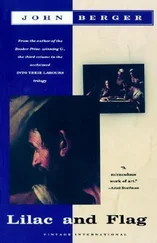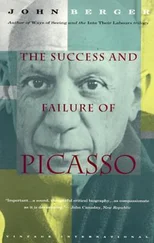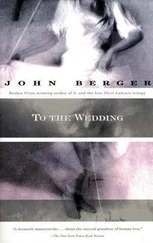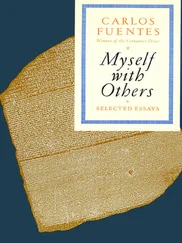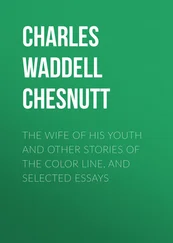I believe that in almost every work of Picasso’s a single idea has dominated in this way and so created a similar sense of inevitability. If the idea is, for example, that of sexual beauty, it demands more subtle forms: the girl’s back will be made to twist very sensitively: but the principle remains the same and rests on the same ability of the artist to forgo all questioning and to yield completely to his one purpose. Forms become like letters in an alphabet whose significance solely depends upon the word they spell. And that brings us back to the tragedy of Picasso. Obviously in the case of an artist such as I have described, his development within himself and his impact on others depend exclusively on his ideas, on his themes. Picasso could not have painted Guernica had it only been a personal nightmare. And equally, if the picture which now exists had always been called Nightmare and we knew nothing of its connection with Spain, it would not move us as it does. All aesthetes will object to that. But Guernica has deservedly become the one legendary painting of this century, and although works of art can perpetuate legends, they do not create them. If they could Picasso’s problem would have been solved, for his tragedy is that most of his life he has failed to find themes to do himself justice. He has produced Guernica, War and Peace , some miraculous Cubist studies, some beautiful lyrical drawings, but in hundreds of works he has, as a result of his singlemindedness, sacrificed everything to ideas which are not worthy of the sacrifice. Many of his paintings are jokes, either bitter or gay; but they are the jokes of a man who does not know what else to do except laugh, who improvises with fragments because he can find nothing else to build upon.
It would be foolish to imagine that Picasso could have developed differently. His genius is wilful and instinctive. He had to take what was at hand and the unity of popular feeling essential to sustain the themes of a dramatic artist such as he is, has often been lacking or beyond his horizon. He then faced the choice of either abandoning his energy or expending it on something trivial and so creating parodies.
I am sure he is aware of this. He is obsessed by the question of whether art, which as we understand it today is so conscious an affair, can ever be born of happiness and abundance instead of lack and loss. The immortal incomplete artist beside the mortal complete man — this is one of his recurring themes. The sculptor chisels instead of enjoying his model. The poet-lovers search for images in one another’s eyes instead of each other. A woman’s head is drawn in a dozen different ways, is almost endlessly improvised upon, because no single representation can do her living justice. And then at other times, and particularly in the second half of his life, Picasso reverses his comment and comparison, and contrasts the artist’s always new, fresh imagination with his ageing body. The old man and the young girl, Beauty and the Beast, Beauty and the Minotaur: the theme of the self-same artist and man being unable to accept each other’s roles.
Yet finally why is it so impossible to end without saluting him? Because by his dedication to his great themes, by his constant extremism, by the audacity of his jokes, by his simplicity (which is usually taken for incomprehensibility), by his very method of working, he has proved that all the paraphernalia, all the formulae of art are expendable for the sake of the spirit. If we now take him too seriously we destroy his example by re-establishing all the paraphernalia he has liberated us from.
1954/1955
Matisse’s greatness has been recognized but not altogether understood. In an ideological climate of anguish and nostalgia an artist who frankly and supremely celebrated Pleasure, and whose works are an assurance that the best things in life are immediate and free, is likely to be thought not quite serious enough. And indeed, in Matisse’s obituaries the word ‘charming’ appeared too frequently. ‘I want people who feel worried, exhausted, overworked, to get a feeling of repose when looking at my painting.’ That was Matisse’s intention. And now, looking back over his long life’s work, one can see that it represents a steady development towards his declared aim, his works of the last fifteen or twenty years coming nearest to his ideal.
Matisse’s achievement rests on his use — or in the context of contemporary Western art one could say his invention — of pure colour. The phrase, however, must be defined. Pure colour as Matisse understood it had nothing to do with abstract colour. He repeatedly declared that colour ‘must serve expression’. What he wanted to express was ‘the nearly religious feeling’ he had towards sensuous life — towards the blessings of sunlight, flowers, women, fruit, sleep.
When colour is incorporated into a regular pattern — as in a Persian rug — it is a subsidiary element: the logic of the pattern must come first. When colour is used in painting it usually serves either as a decorative embellishment of the forms — as, say, in Botticelli — or as a force charging them with extra emotion — as in Van Gogh. In Matisse’s later works colour becomes the entirely dominant factor. His colours seem neither to embellish nor charge the forms, but to uplift and carry them on the very surface of the canvas. His reds, blacks, golds, ceruleans, flow over the canvas with the strength and yet utter placidity of water above a weir, the forms carried along on their current.
Obviously such a process implies some distortion. But the distortion is far more of people’s preconceived ideas about art than of nature. The numerous drawings that Matisse always made before he arrived at his final colour-solution are evidence of the pains he took to preserve the essential character of his subject whilst at the same time making it ‘buoyant’ enough to sail on the tide of his colour scheme. Certainly the effect of these paintings is what he hoped. Their subjects invite, one embarks, and then the flow of their colour-areas holds one in such sure equilibrium that one has a sense of perpetual motion — a sense of movement with all friction removed.
Nobody who has not painted himself can fully appreciate what lies behind Matisse’s mastery of colour. It is comparatively easy to achieve a certain unity in a picture either by allowing one colour to dominate or by muting all the colours. Matisse did neither. He clashed his colours together like cymbals and the effect was like a lullaby.
Perhaps the best way of defining Matisse’s genius is to compare him with some of his contemporaries who were also concerned with colour. Bonnard’s colours dissolve, making his subjects unattainable, nostalgic. Matisse’s colours could hardly be more present, more blatant, and yet achieve a peace which is without a trace of nostalgia. Braque has cultivated his sensibility until it has become precious. Matisse broadened his sensibility until it was as wide as his colour range, and said that he wanted his art to be ‘something like a good armchair’. Dufy shared Matisse’s sense of enjoyment and his colours were as gay as the fětes he painted; but Matisse’s colours, no less bright, go beyond gaiety to affirm contentment. The only man who possibly equals Matisse as a colourist is Léger. But their aims are so different that they can hardly be compared. Léger is essentially an epic, civic artist; Matisse essentially a lyrical and personal one.
I said that Matisse’s paintings and designs of the last fifteen years were his greatest. Obviously he produced fine individual works before he was seventy. Yet not I think till then had he the complete control of his art that he needed. It was, as he himself said, a question of ‘organizing the brain’. Like most colourists he was an intuitive painter, but he realized that it was necessary to select rigorously from his many ‘instincts’ to make them objective in order to be able to build upon them rationally. In terms of the picture this control makes the all-important difference between recording a sensation and re-constructing an emotion. The Fauves, whom Matisse led, recorded sensations. Their paintings were (and are) fresh and stimulating, but they depended upon and evoke a forced intoxication. When Matisse painted red flashes against ultramarine and magenta stripes to describe the movement of goldfish in a bowl, he communicated a pleasurable shock; one is brought up short by the climax but no solution follows. It was for this reason, I think, that Matisse finally abandoned Fauvism and returned to a more disciplined form of painting. Between 1914 and 1918 he produced paintings — mostly interiors — which are magnificently resonant in colour, but in which the colours seem assembled rather than dynamic — like the furnishings in a room. Then for the next ten years he painted his famous Odalisques. In these the colour is freer and more pervasive, but, being based on a heightening of the actual local colour of each object, it has a slightly exotic effect. This period, however, led him to his final great phase: the phase in which he was able to combine the energy of his early Fauve days with a quite objective visual wisdom.
Читать дальше

